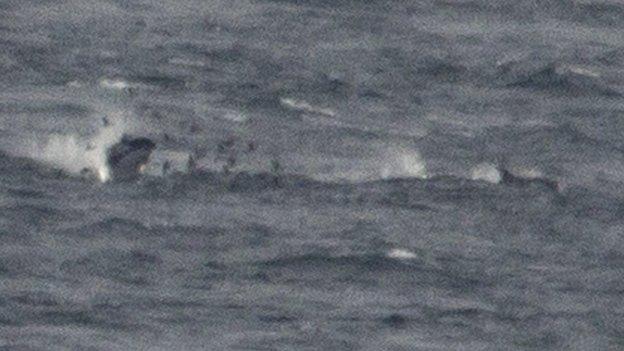Icelandic orcas in record Moray Firth visit
- Published
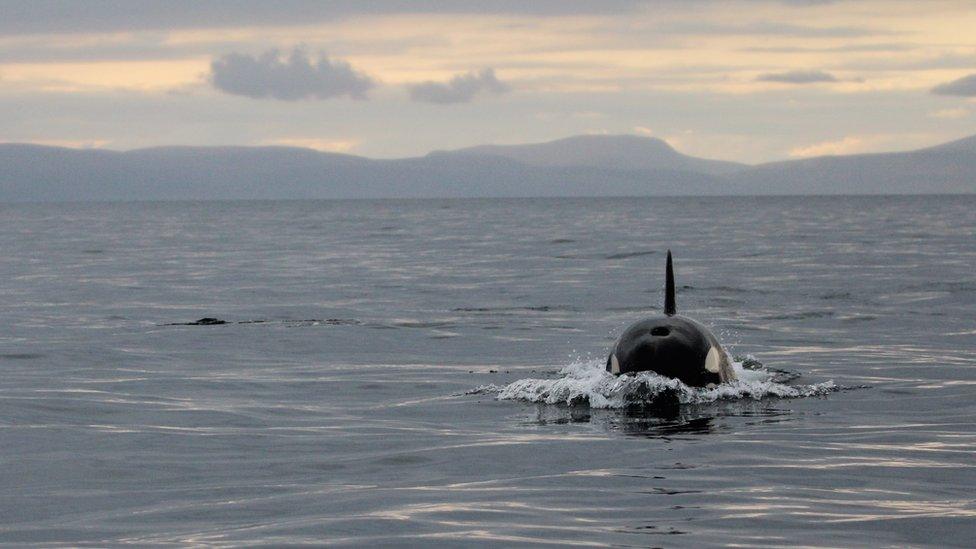
The orca were photographed north-west of Findhorn
A pod of orca from Iceland has been photographed in the Moray Firth off Findhorn, the furthest south the group has been recorded.
The killer whales are the same animals recently seen off Caithness.
The group is known in Scotland as the Northern Isles community and moves between Iceland and Scotland to hunt and raise young.
Pippa Low, of Findhorn-based North 58° Sea Adventures, photographed the orca in the firth earlier this week.
She was guided to where they were by marine life observers Adele Sutherland and Alan Airey, who were documenting the orcas' behaviour from locations along the firth's coast, including Burghead.
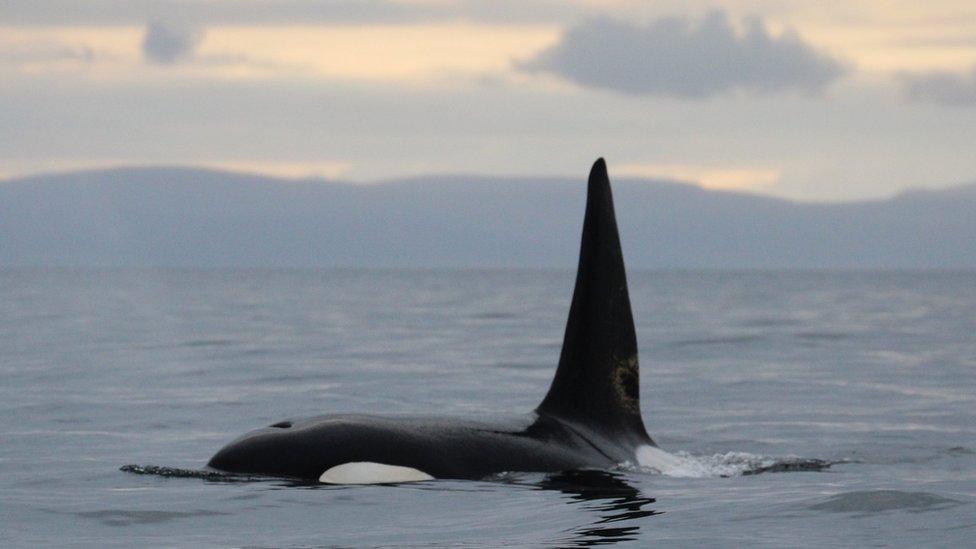
The killer whales are of the same pod seen off Caithness last week
Ms Low said: "I had just got back to Findhorn Marina, cleaning up after a busy day on the water, when I got a call from Alan Airey to say there were orca in the firth.
"So we squeezed out of Findhorn on the low tide and headed across the firth towards Portmahomack Lighthouse - expertly directed by Adele Sutherland, Alan and the rest of the team.
"We encountered the pod at approximately 8pm, seven miles north-west of Findhorn."
She added: "The pod has been identified by the Icelandic Orca Project as a pod which winters in Iceland.
"Individual identification of each animal is still being confirmed. However, this is the furthest south that these particular whales have ever been recorded by the research group, which makes it an even more interesting sighting."
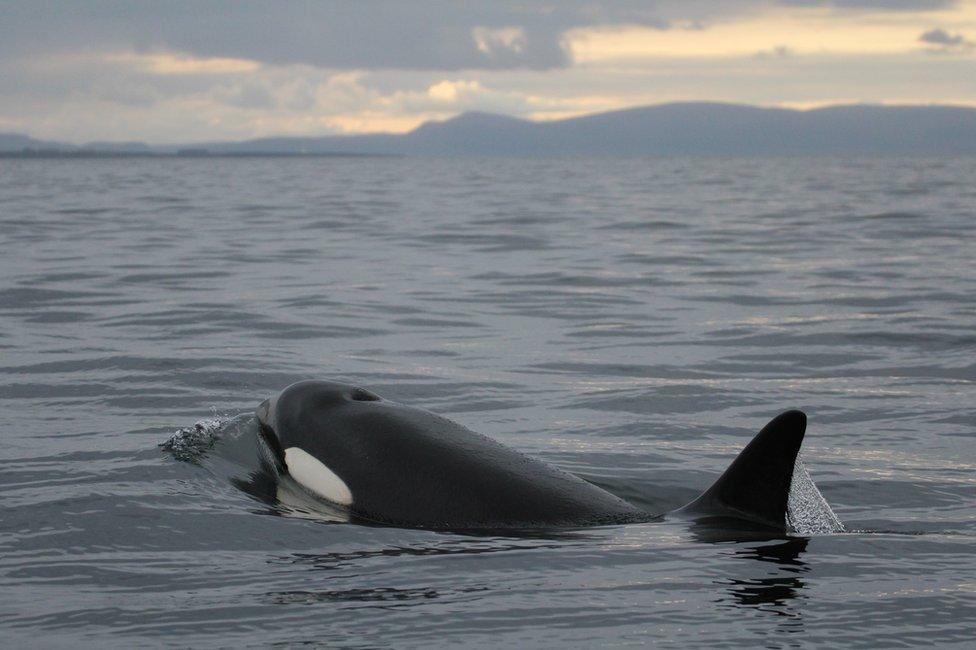
The pod moves between Iceland and Scotland to hunt and raise young
Kathy James, sightings officer with conservation charity Sea Watch, said: "Although this sighting is now the furthest south that individuals from the Icelandic population have been confirmed, other killer whale sightings have occurred in the Moray Firth and further south on many occasions.
"It may well be that amongst these, were unidentified Iceland killer whales. One must remember that clear photographic evidence is required to recognise individual orcas."
She added: "We don't know very much about the movements of killer whales around Britain.
"Members of a pod that has numbered up to 14 can be seen annually around the Hebrides of west Scotland, mainly in summer."
- Published19 May 2016

- Published6 January 2016
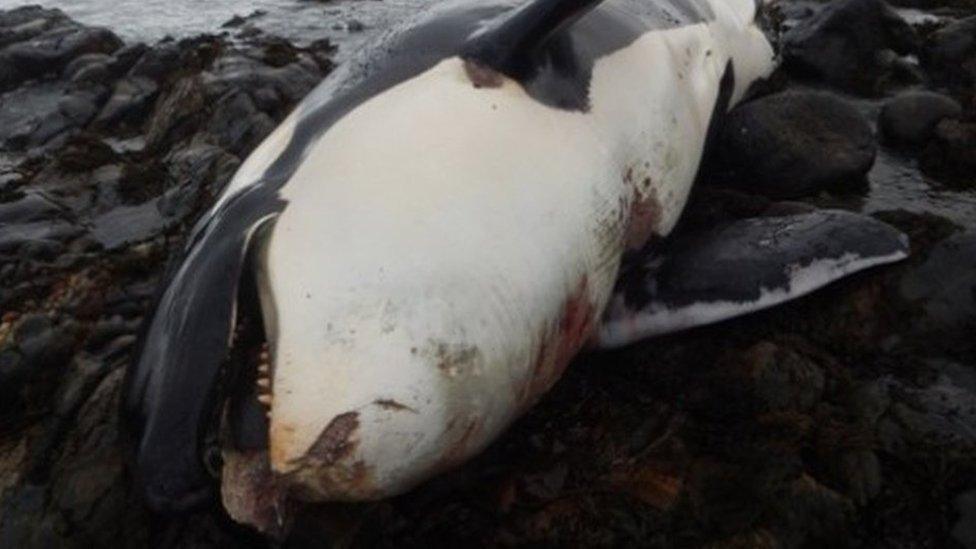
- Published28 January 2015
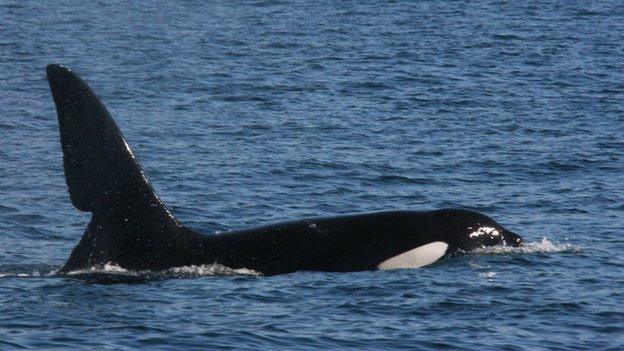
- Published23 August 2013

- Published23 May 2012
